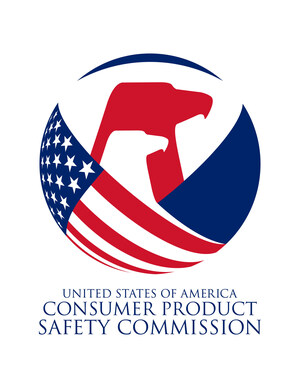One portable generator can produce the same amount of carbon monoxide as hundreds of cars
WASHINGTON, Aug. 4, 2022 /PRNewswire/ -- The U.S. Consumer Product Safety Commission (CPSC) today released a new report on carbon monoxide (CO) poisoning deaths associated with portable generators. CPSC also launched a new public service announcement (PSA) underscoring the dangers of portable generators.
In its new report, Fatal Incidents Associated with Non-Fire Carbon Monoxide Poisoning from Engine-Driven Generators and Other Engine-Driven Tools 2011-2021, CPSC estimates that about 85 consumers die in the U.S. each year from CO poisoning caused by gasoline-powered portable generators.* The report also shows that African Americans are at higher risk, accounting for 23 percent of generator-related CO deaths, nearly double their estimated 13 percent share of the U.S. population.
Most generator deaths (81%) occur in residential locations. CPSC's study also found that the top three reasons for using a generator among the reported fatal incidents were weather-related power outages, power shut-offs, and attempts to provide power to temporary locations, such as cabins, campers and trailers.
CPSC PSA: One portable generator produces the same amount of carbon monoxide as hundreds of cars illustrates how gasoline-powered portable generators can create a risk of CO poisoning that can kill in minutes. The PSA is also available in Spanish.
CO is called the invisible killer because it is colorless and odorless. CO poisoning from portable generators can happen so quickly that exposed persons may become unconscious before recognizing the symptoms of nausea, dizziness or weakness.
Consumers who plan to use a portable generator during a power loss should follow these tips:
Loss of Power—Using a Generator Safely
- Never operate a portable generator inside a home, garage, basement, crawlspace, shed or on the porch. Opening doors or windows will not provide enough ventilation to prevent the buildup of lethal levels of CO.
- Operate portable generators outside only, at least 20 feet away from the house, and direct the generator's exhaust away from the home and any other buildings that someone could enter, while keeping windows and other openings closed in the exhaust path of the generator.
- Check that portable generators have had proper maintenance, and read and follow the labels, instructions, and warnings on the generator and in the owner's manual.
- Look for portable generators that shut off automatically when high levels of CO are present. Some models with CO shut-off also have reduced emissions. These models may or may not be advertised as certified to the latest safety standards for portable generators- PGMA G300-2018 and UL 2201 – which are estimated to reduce deaths from CO poisoning by 87% and 100%, respectively.
CO and Smoke Alarms Save Lives
- Install battery-operated CO alarms or CO alarms with battery backup on each level and outside separate sleeping areas at home.
- Make sure smoke alarms are installed on every level and inside each bedroom at home.
- Test CO and smoke alarms monthly to make sure they are working properly, and replace batteries, if needed. Never ignore an alarm when it sounds. Get outside immediately. Then call 911.
Read more safety tips in our Carbon Monoxide Safety Center.
*Annual average for the number of reported fatal non-fire CO exposure deaths associated with generators each year from 2017-2019, the last three complete years of the full report (2011-2021). (Report/Table 3) |
About the U.S. CPSC
The U.S. Consumer Product Safety Commission (CPSC) is charged with protecting the public from unreasonable risk of injury or death associated with the use of thousands of types of consumer products. Deaths, injuries, and property damage from consumer product-related incidents cost the nation more than $1 trillion annually. CPSC's work to ensure the safety of consumer products has contributed to a decline in the rate of injuries associated with consumer products over the past 50 years.
Federal law prohibits any person from selling products subject to a Commission ordered recall or a voluntary recall undertaken in consultation with the CPSC.
For lifesaving information:
- Visit CPSC.gov.
- Sign up to receive our e-mail alerts.
- Follow us on Facebook, Instagram @USCPSC and Twitter @USCPSC.
- Report a dangerous product or a product-related injury on www.SaferProducts.gov.
- Call CPSC's Hotline at 800-638-2772 (TTY 301-595-7054).
- Contact a media specialist.
Release Number: 22-198
SOURCE U.S. Consumer Product Safety Commission

WANT YOUR COMPANY'S NEWS FEATURED ON PRNEWSWIRE.COM?
Newsrooms &
Influencers
Digital Media
Outlets
Journalists
Opted In





Share this article